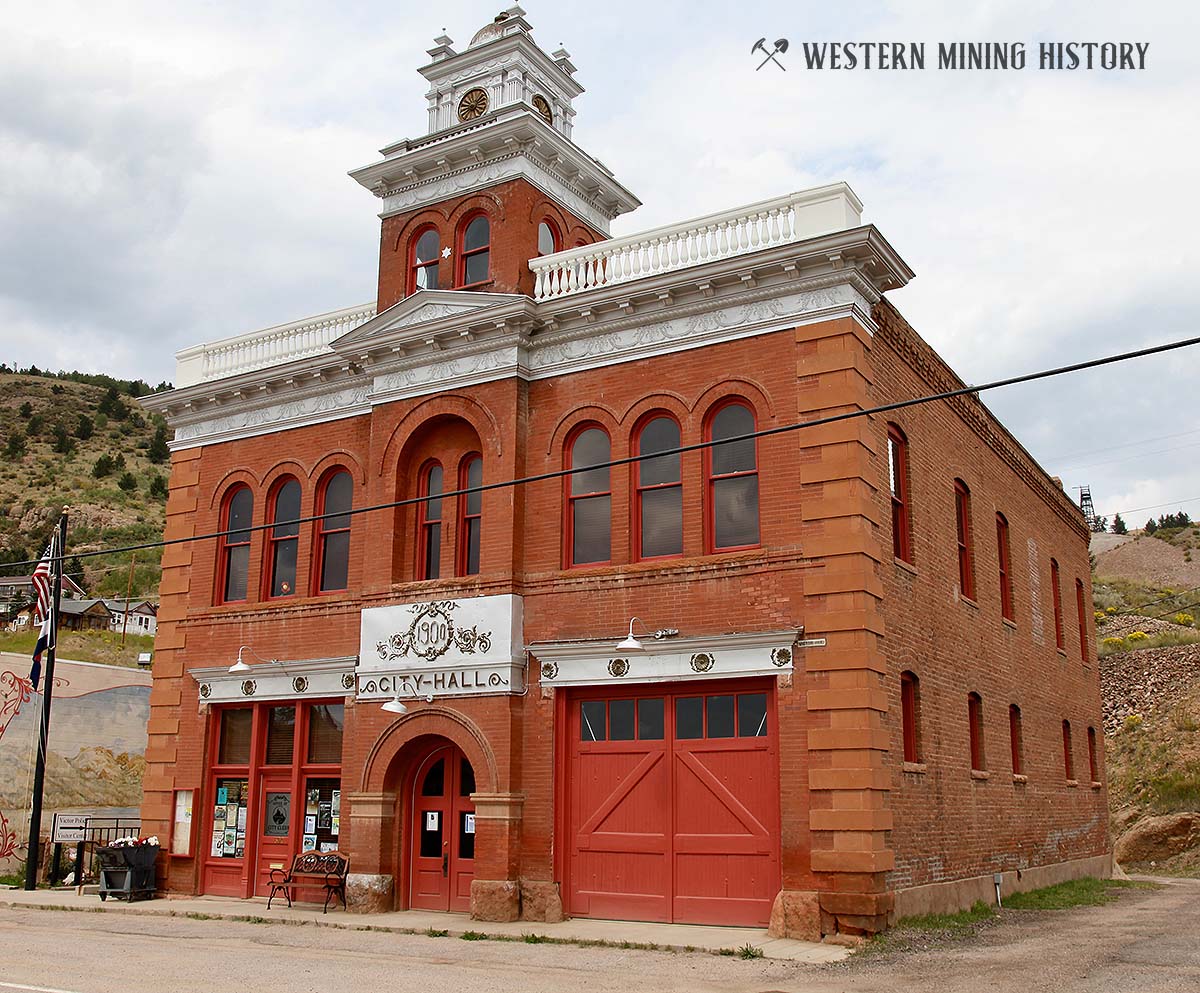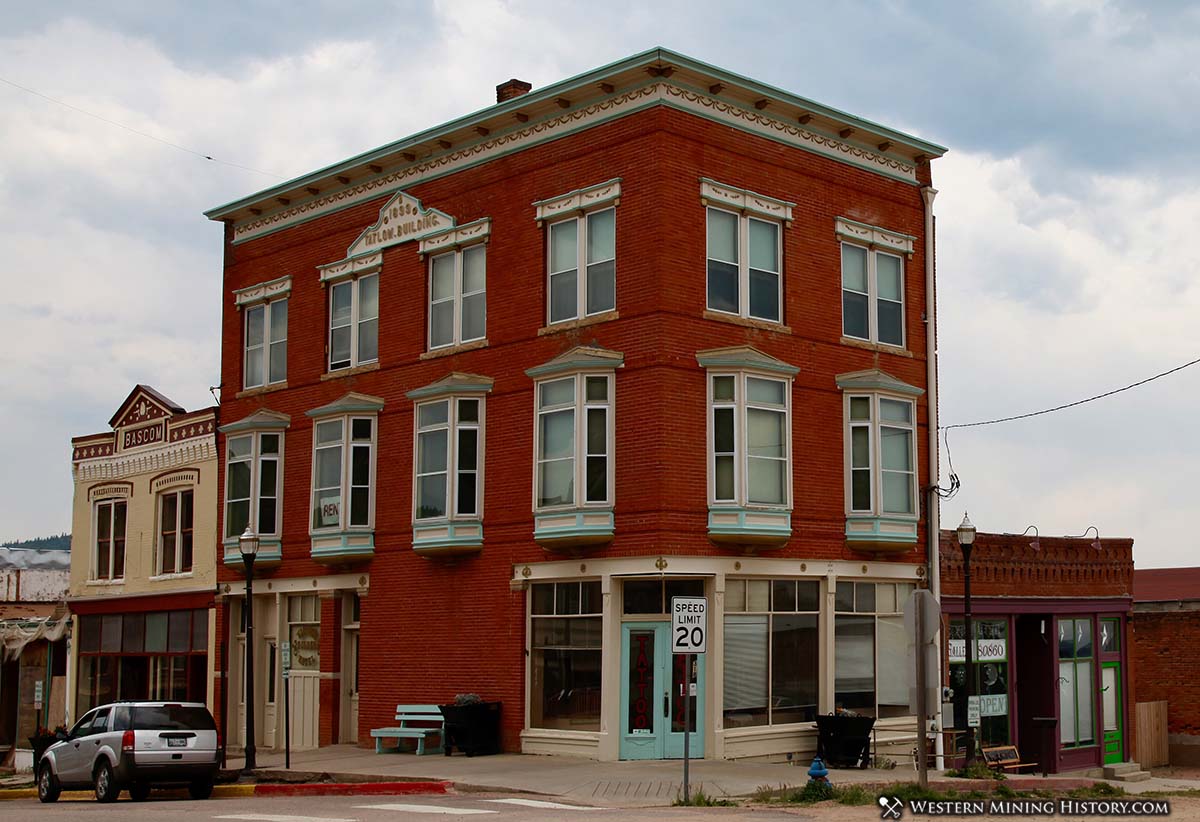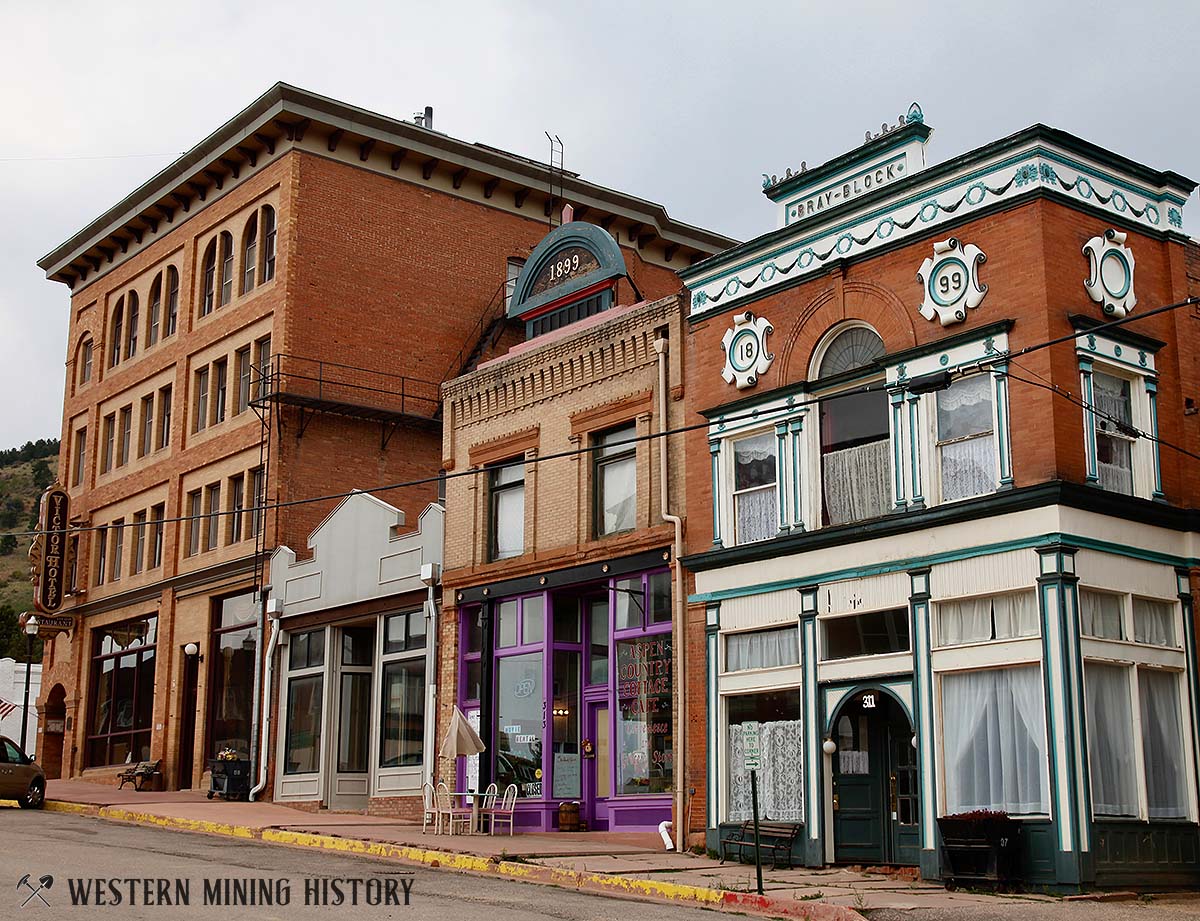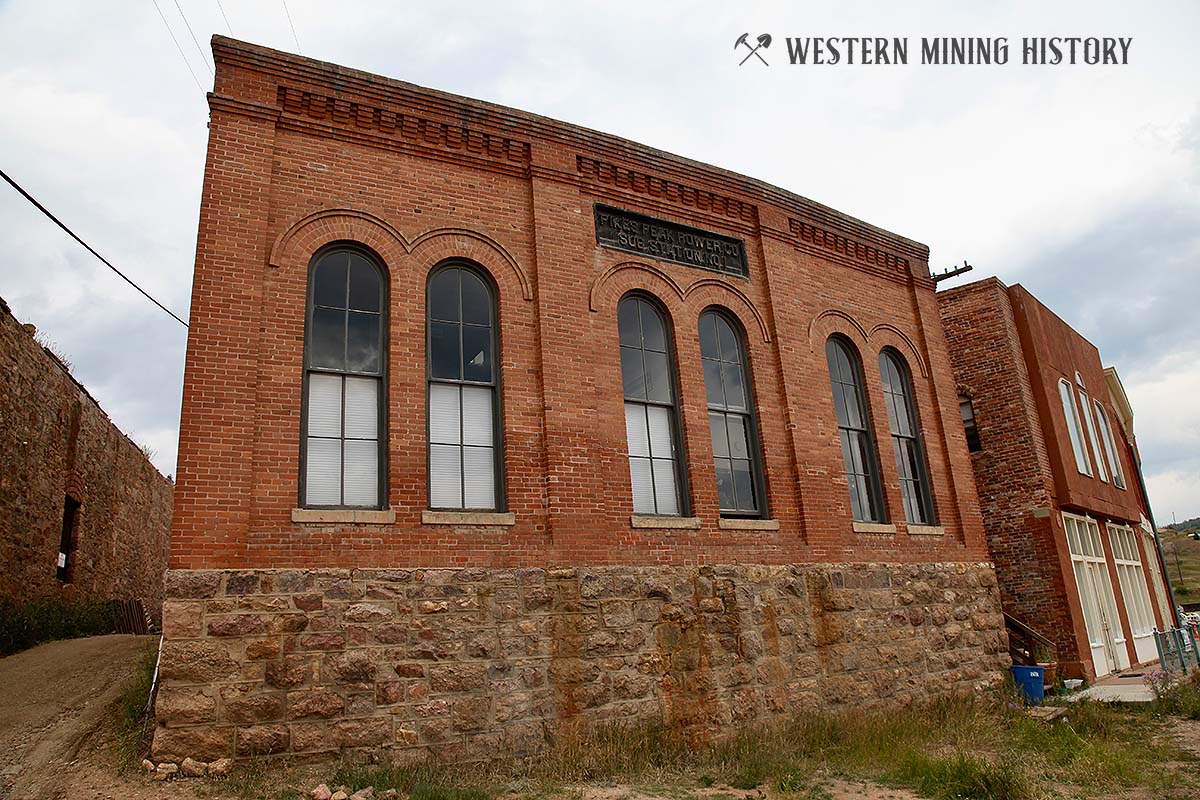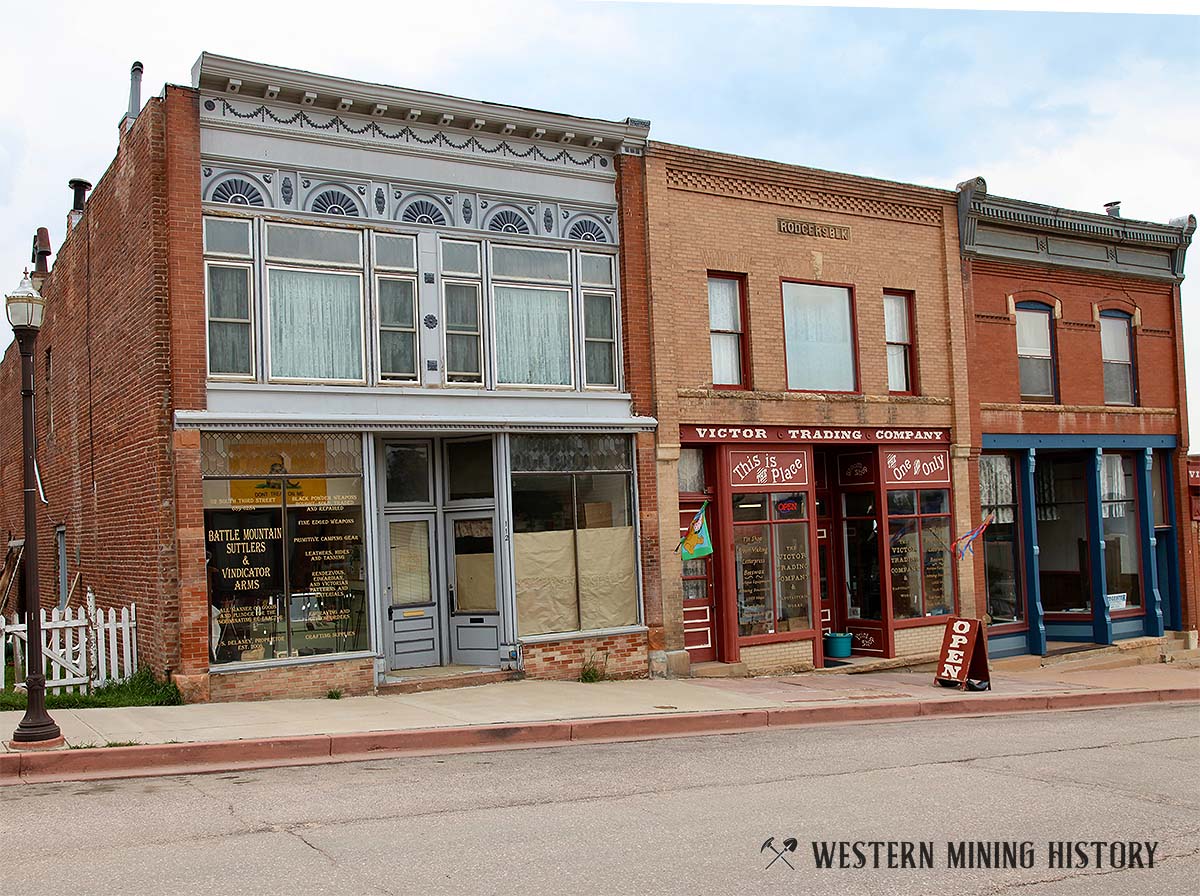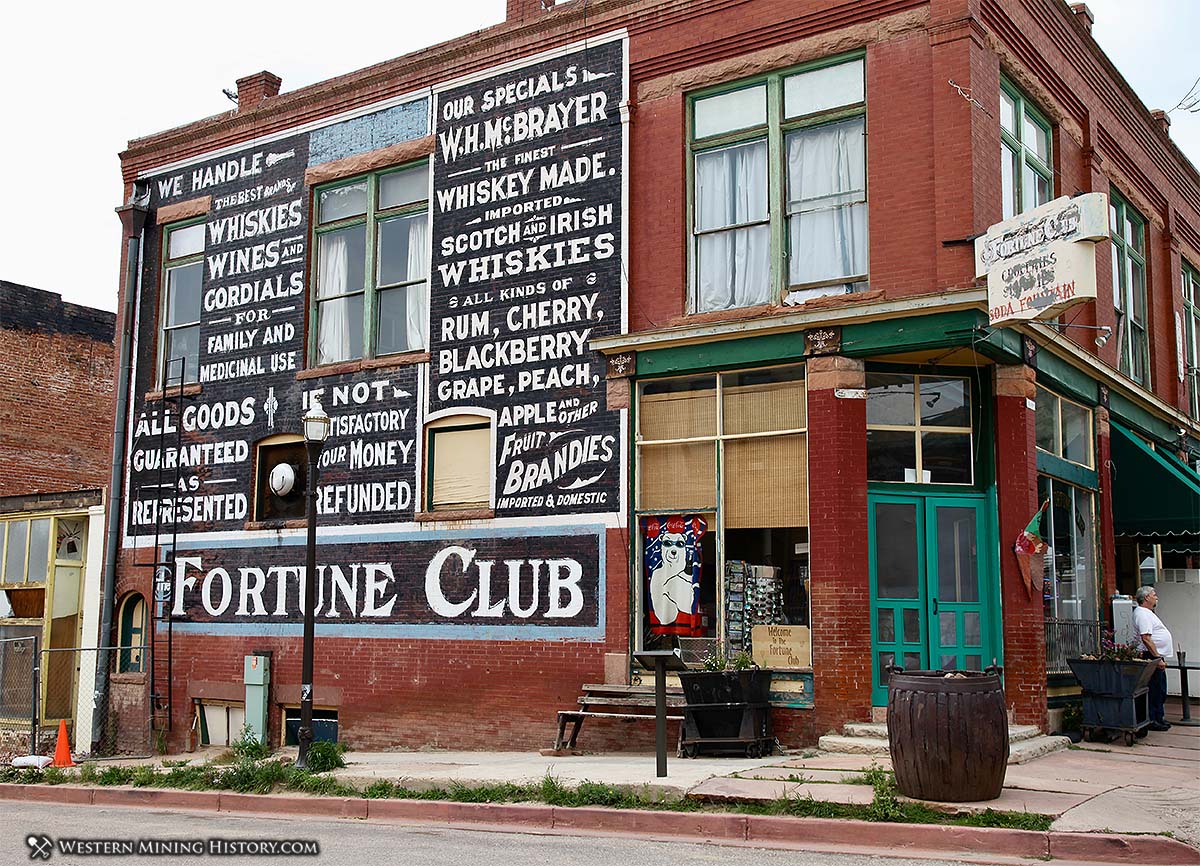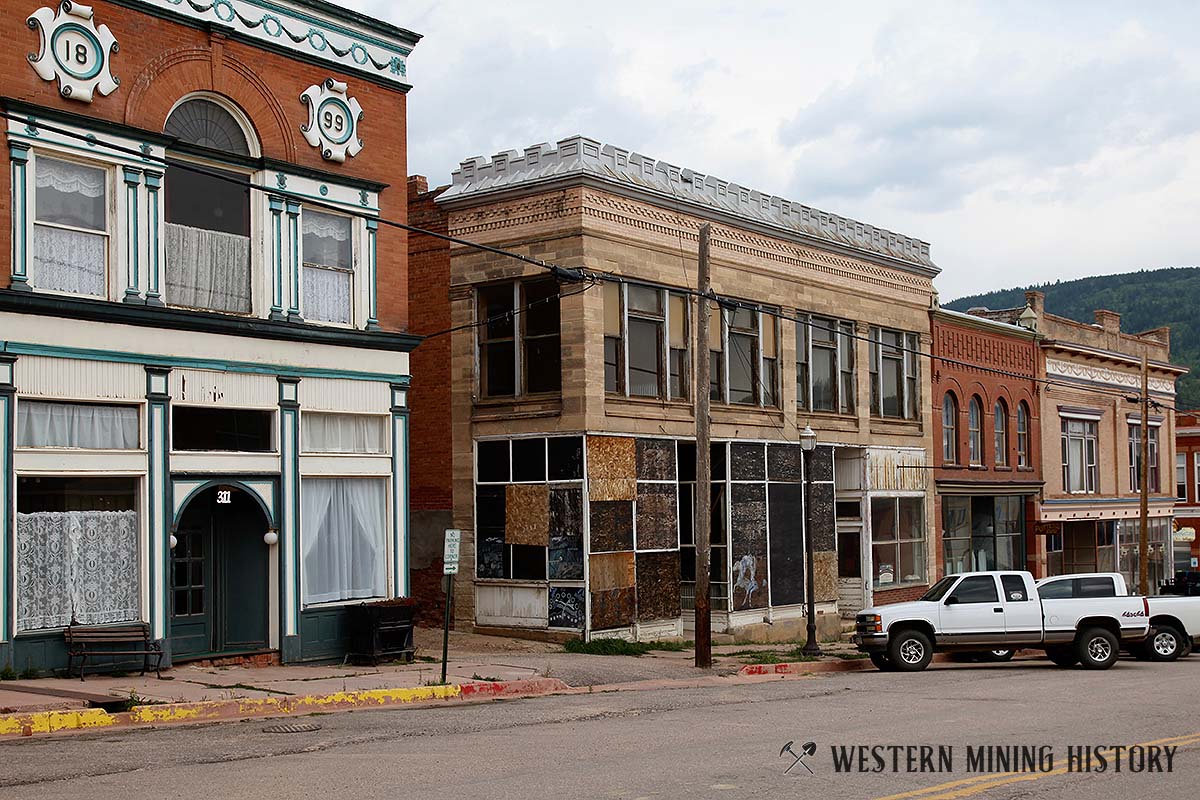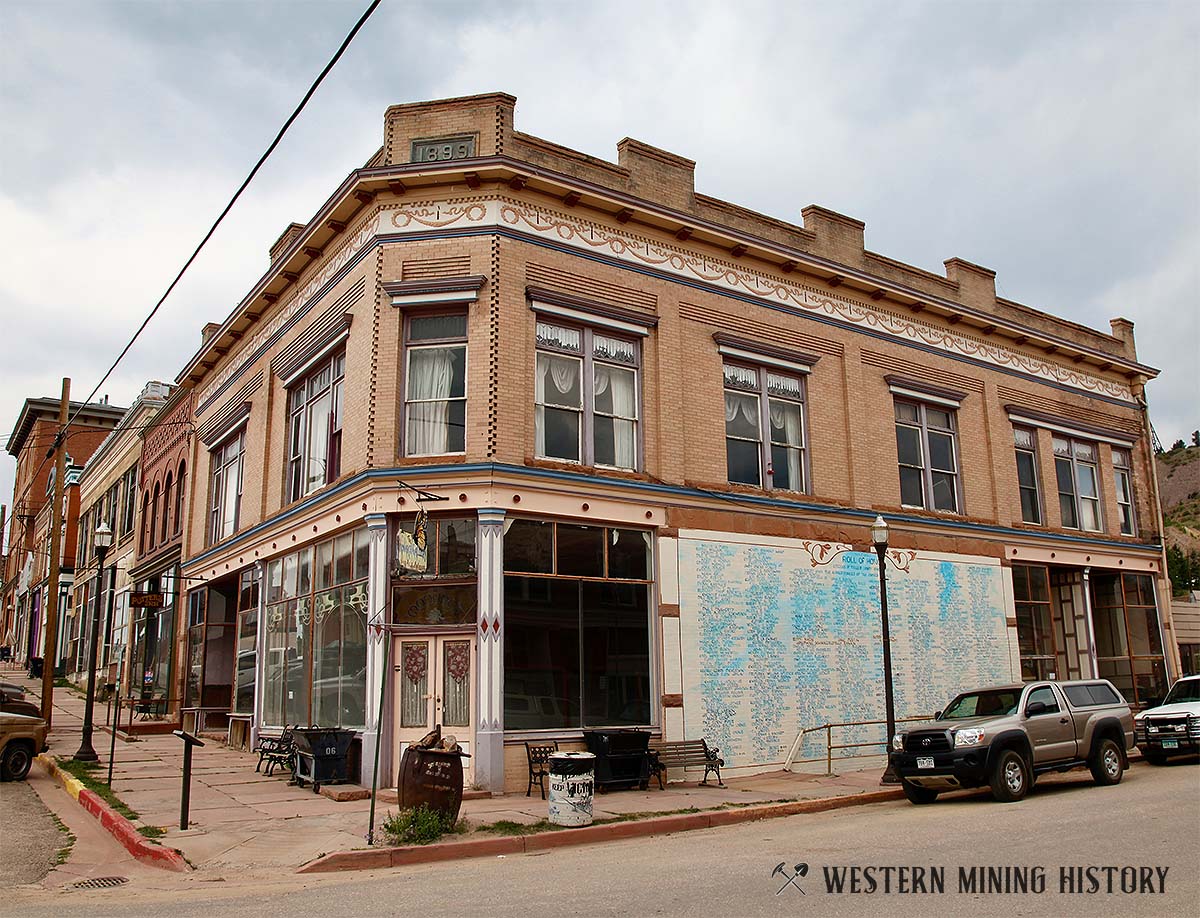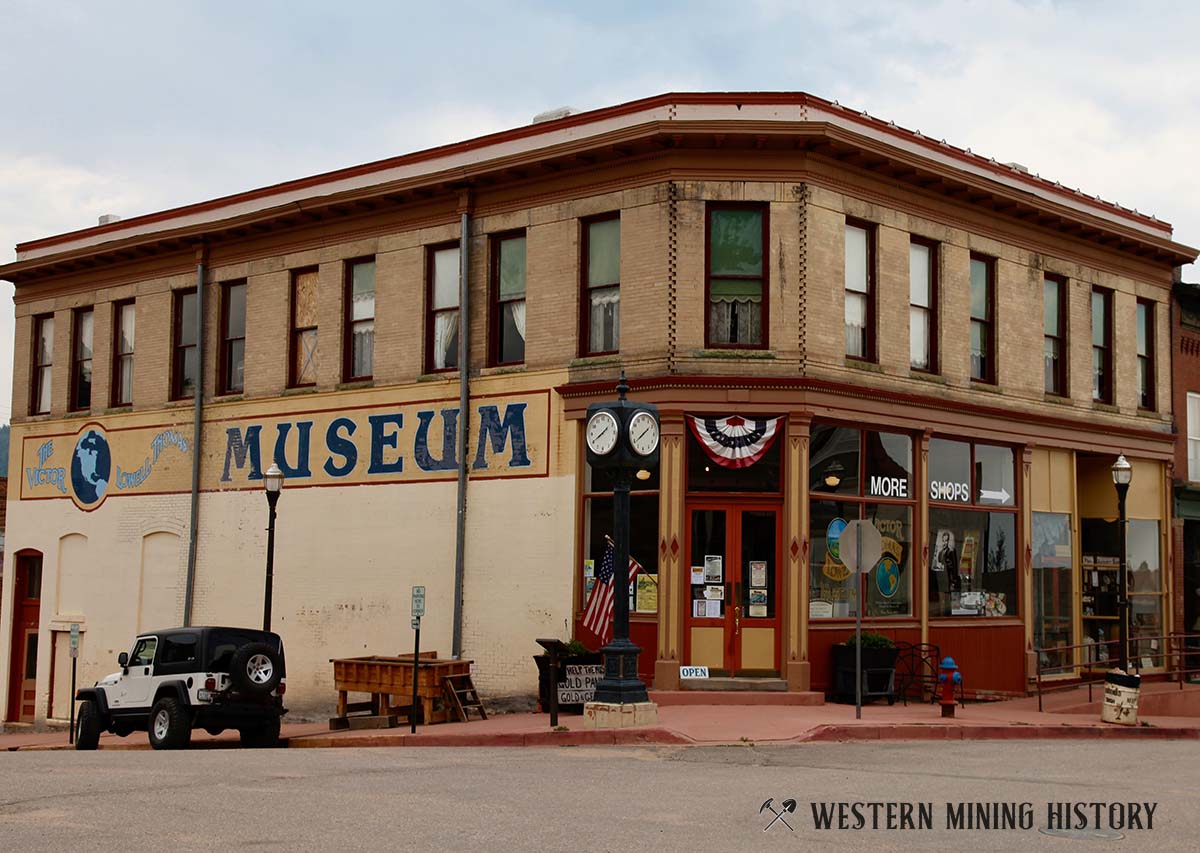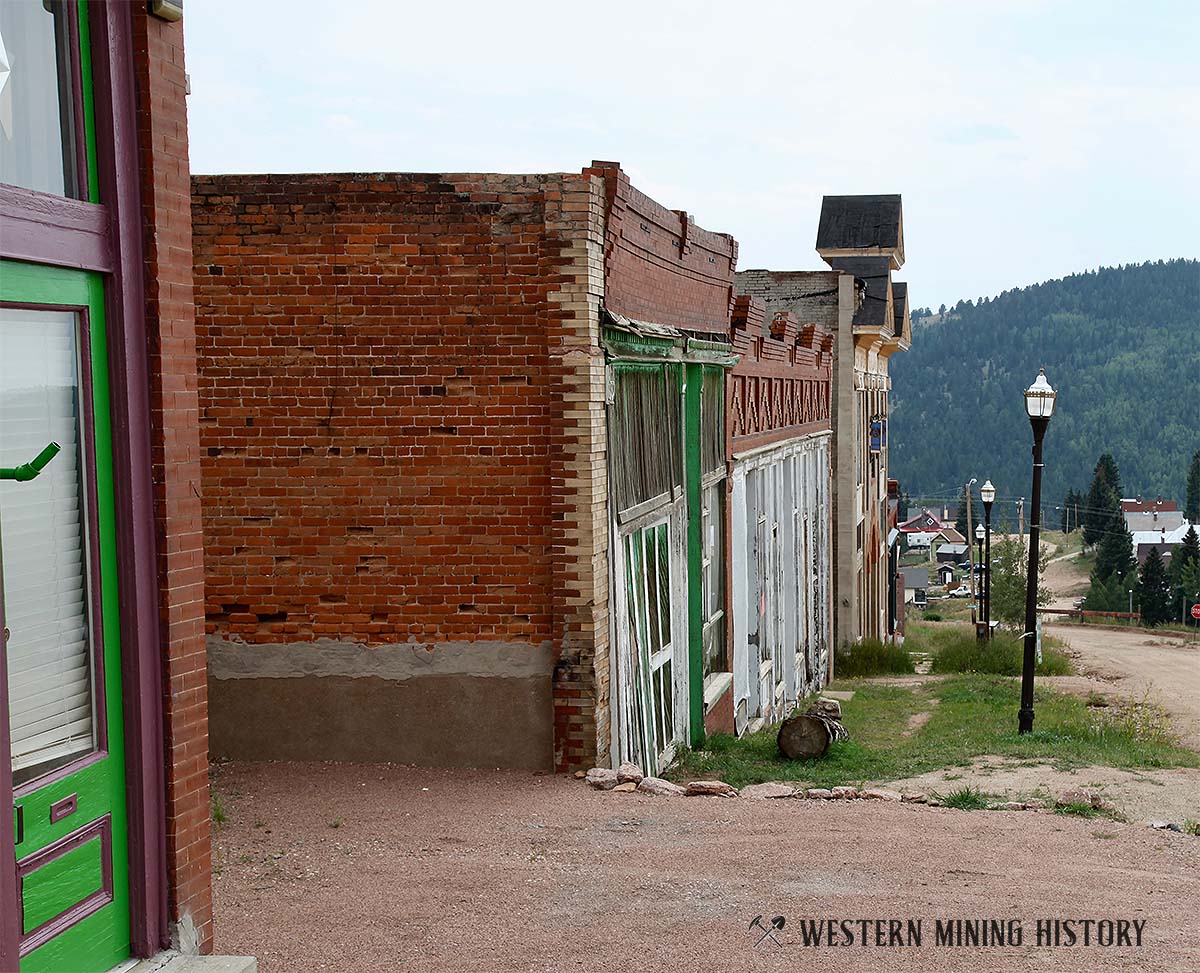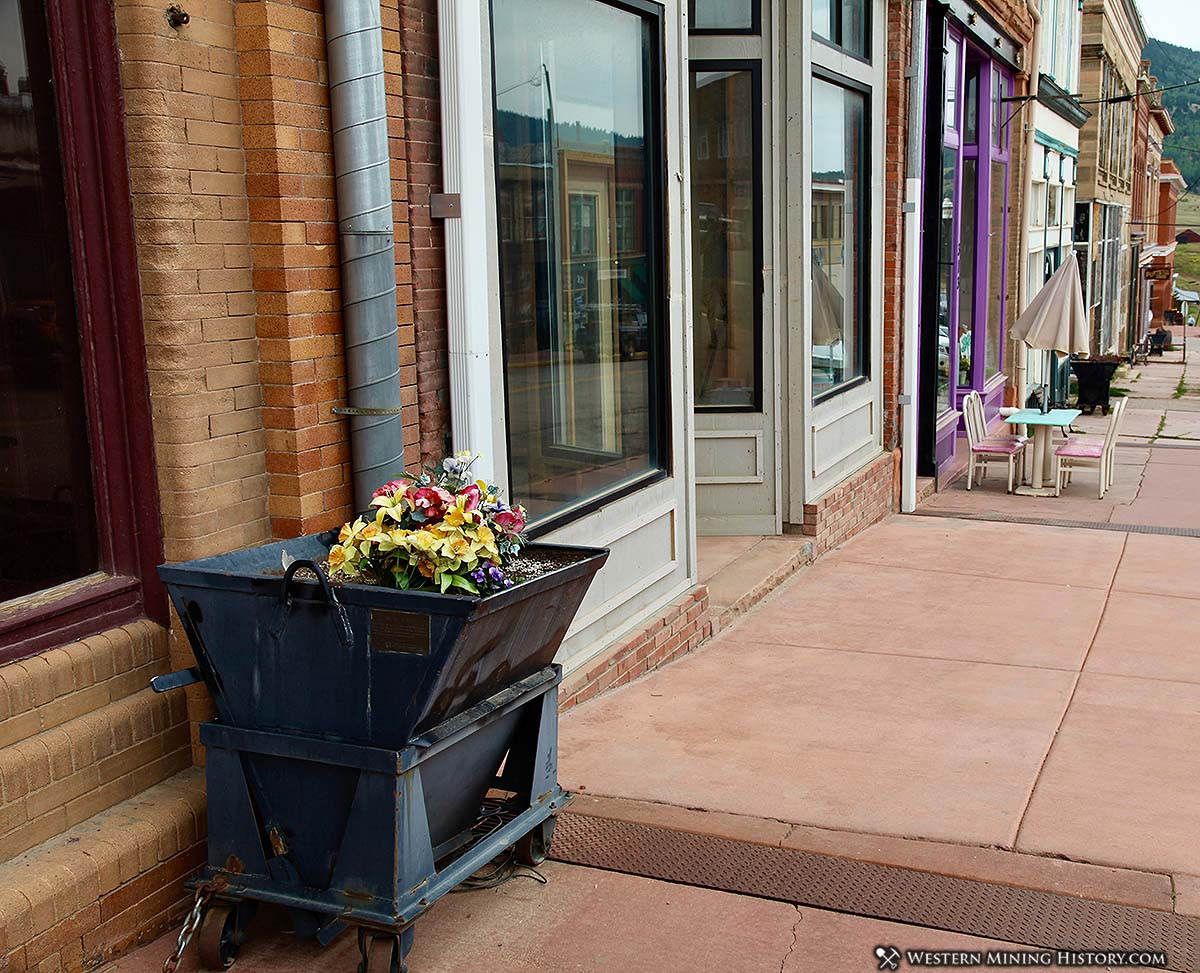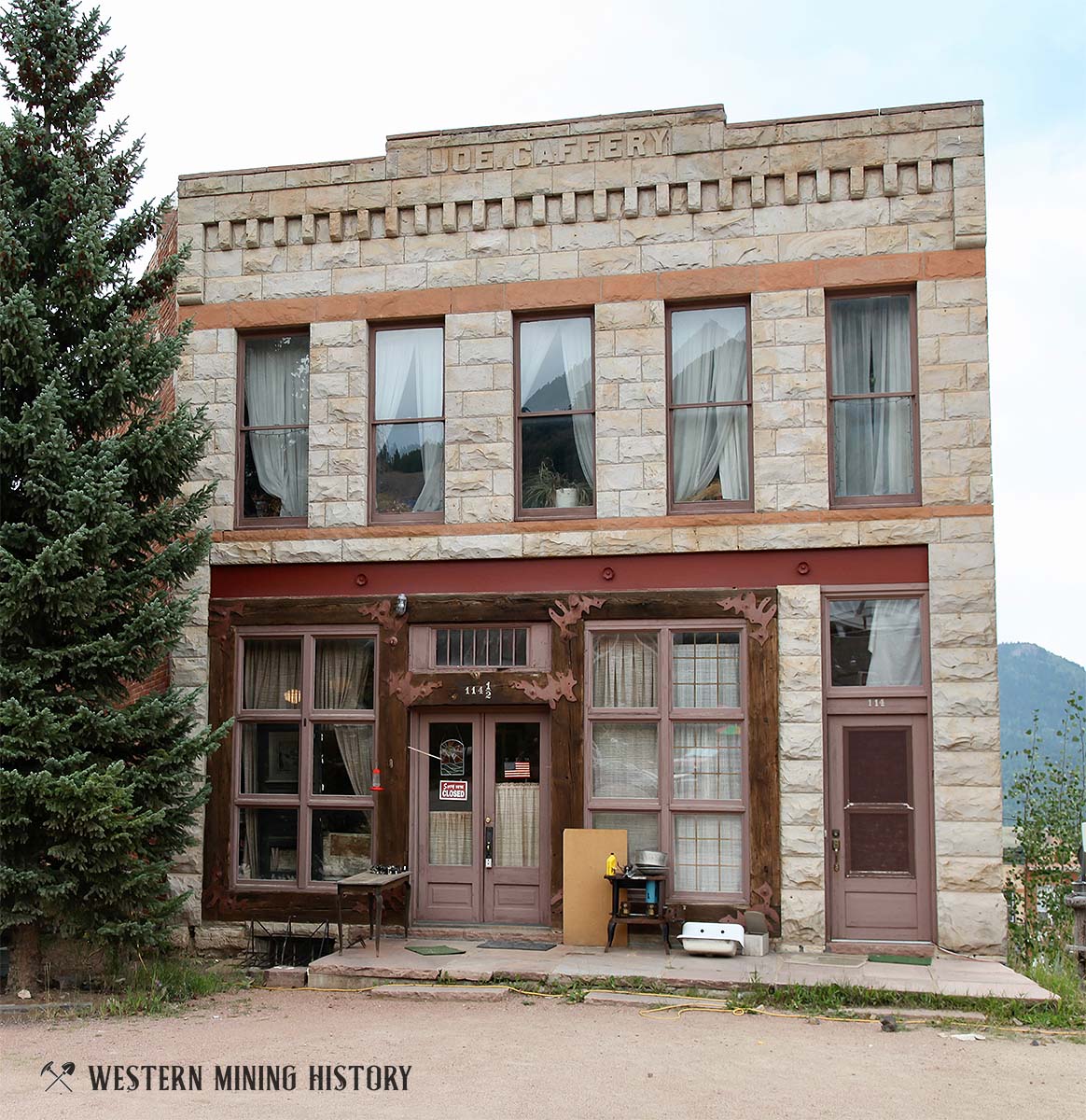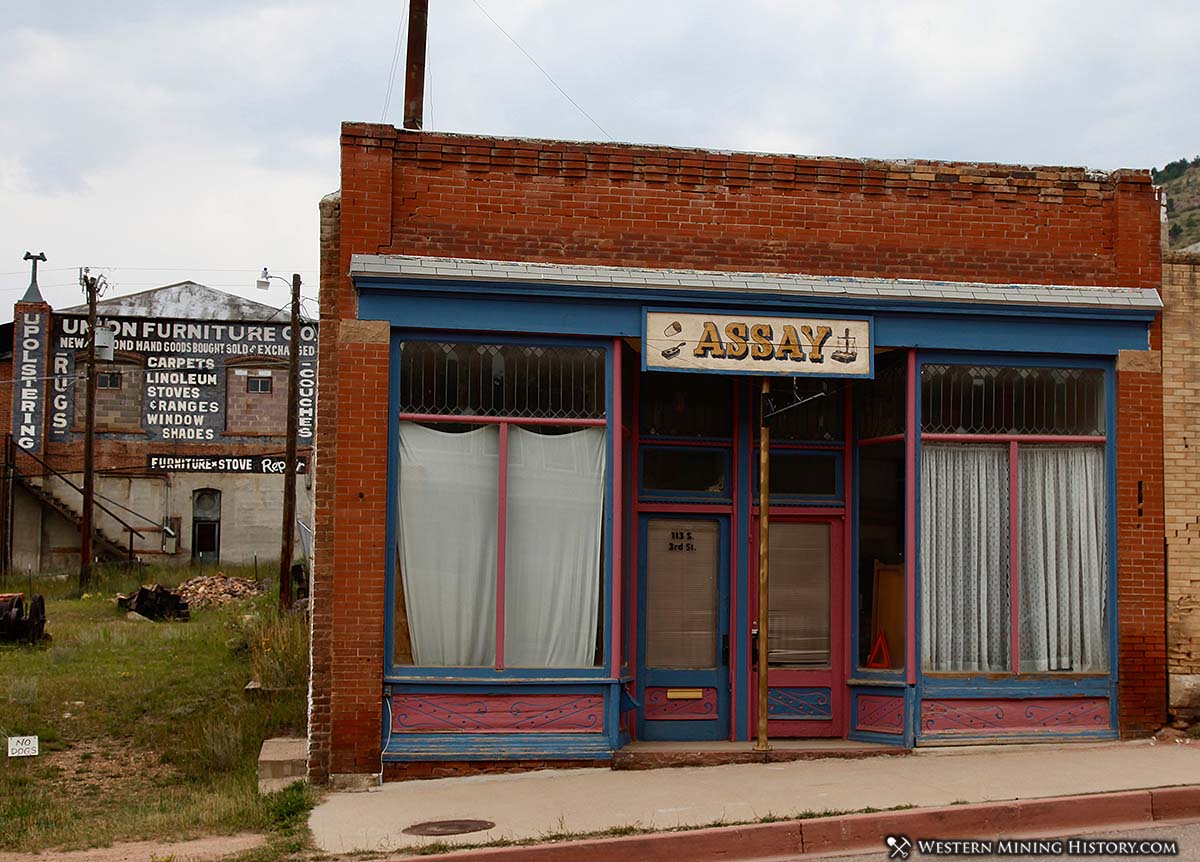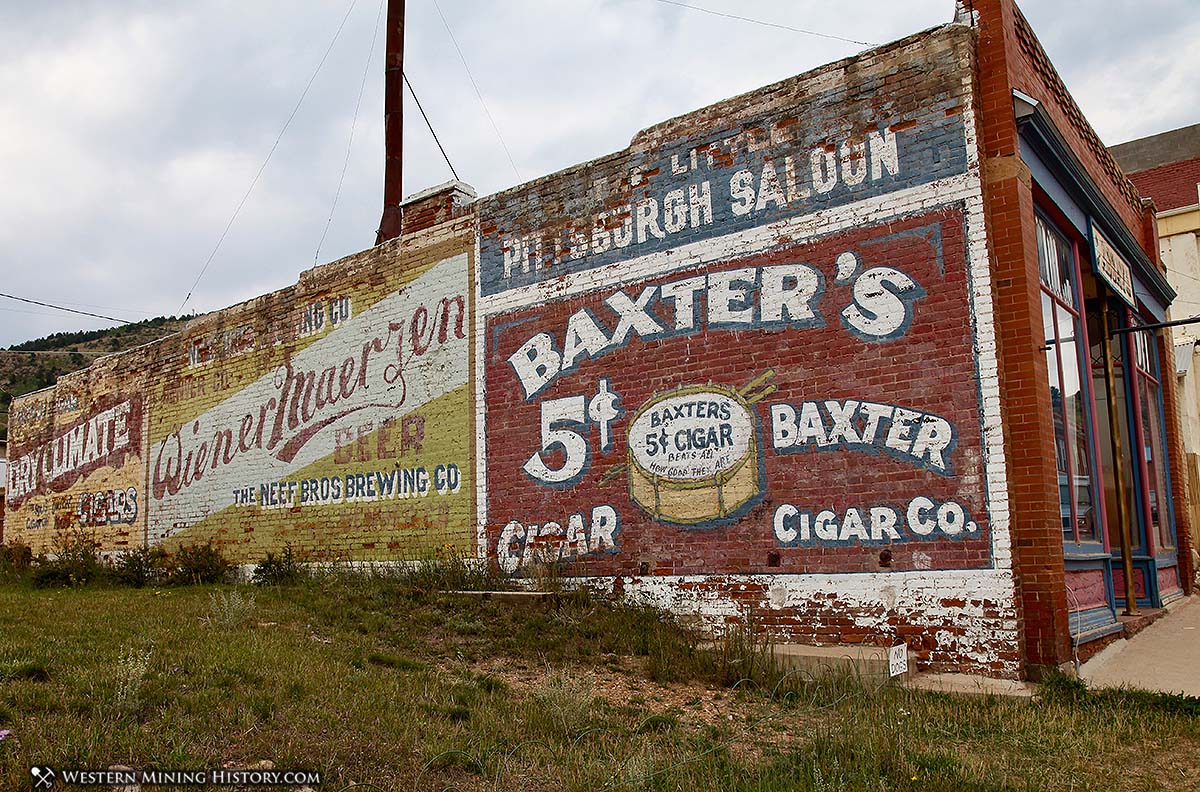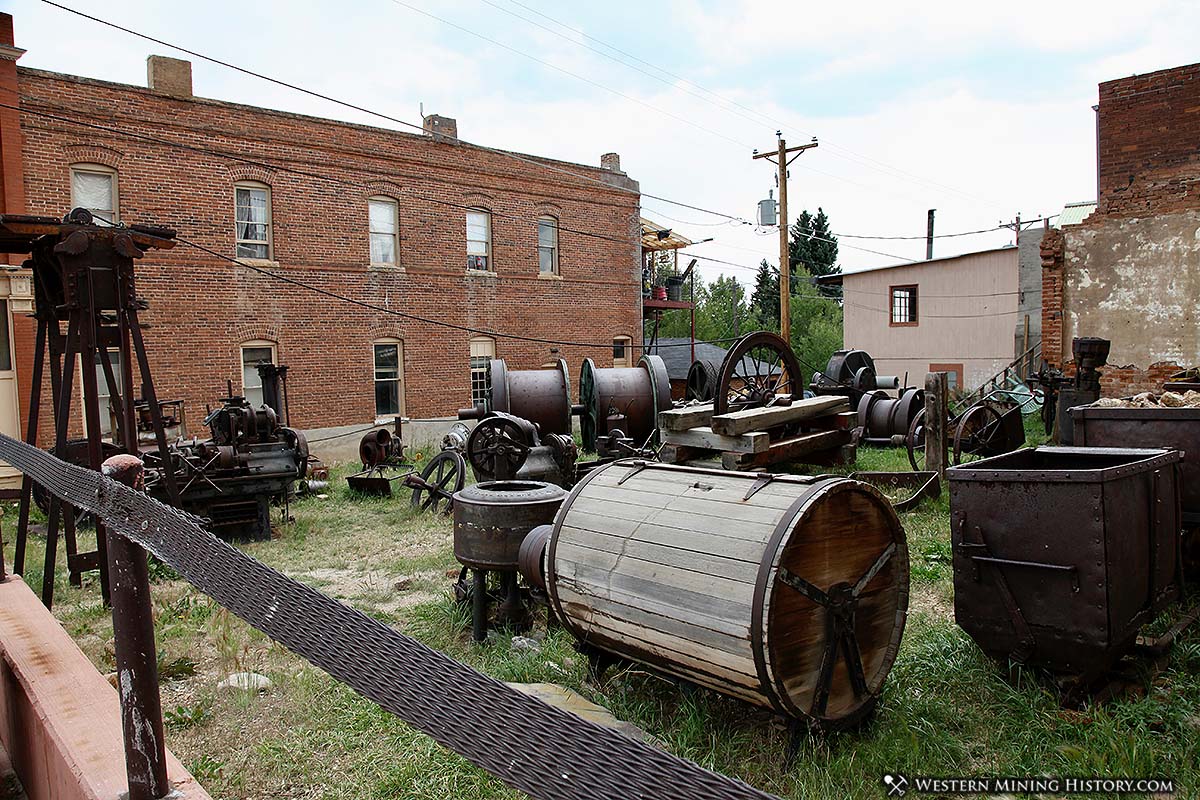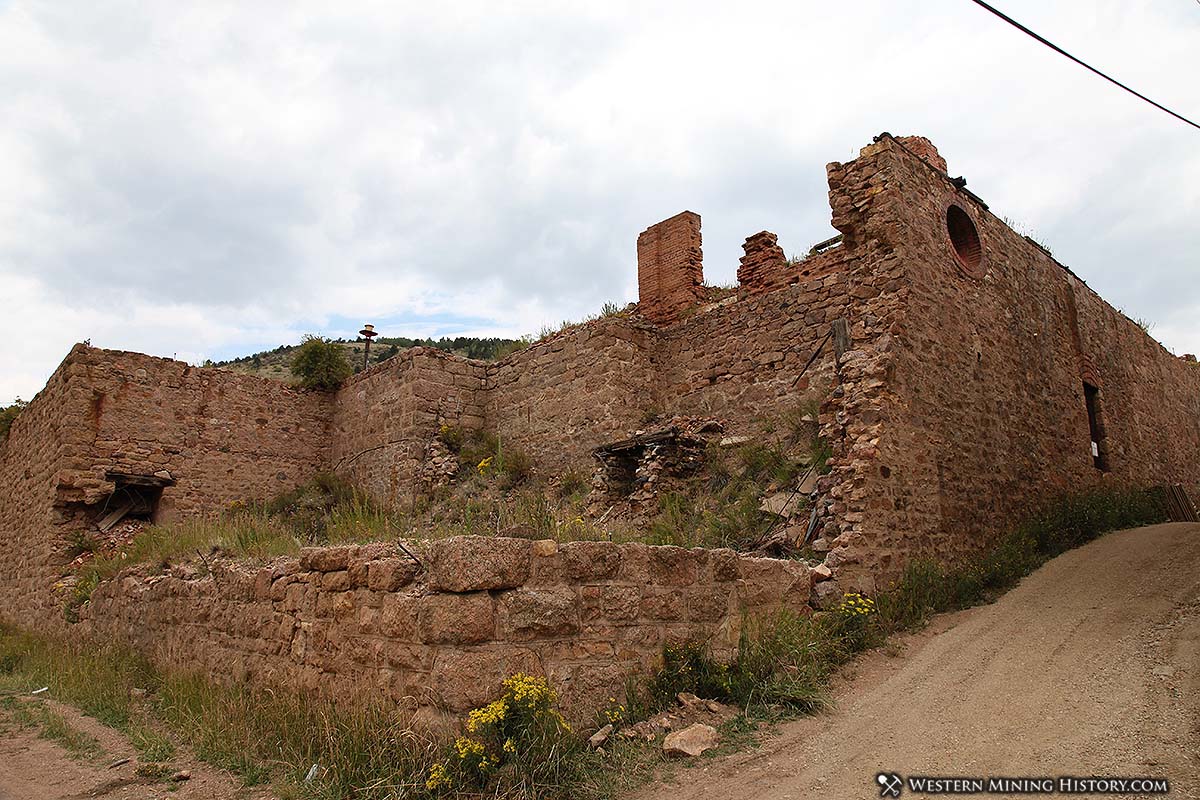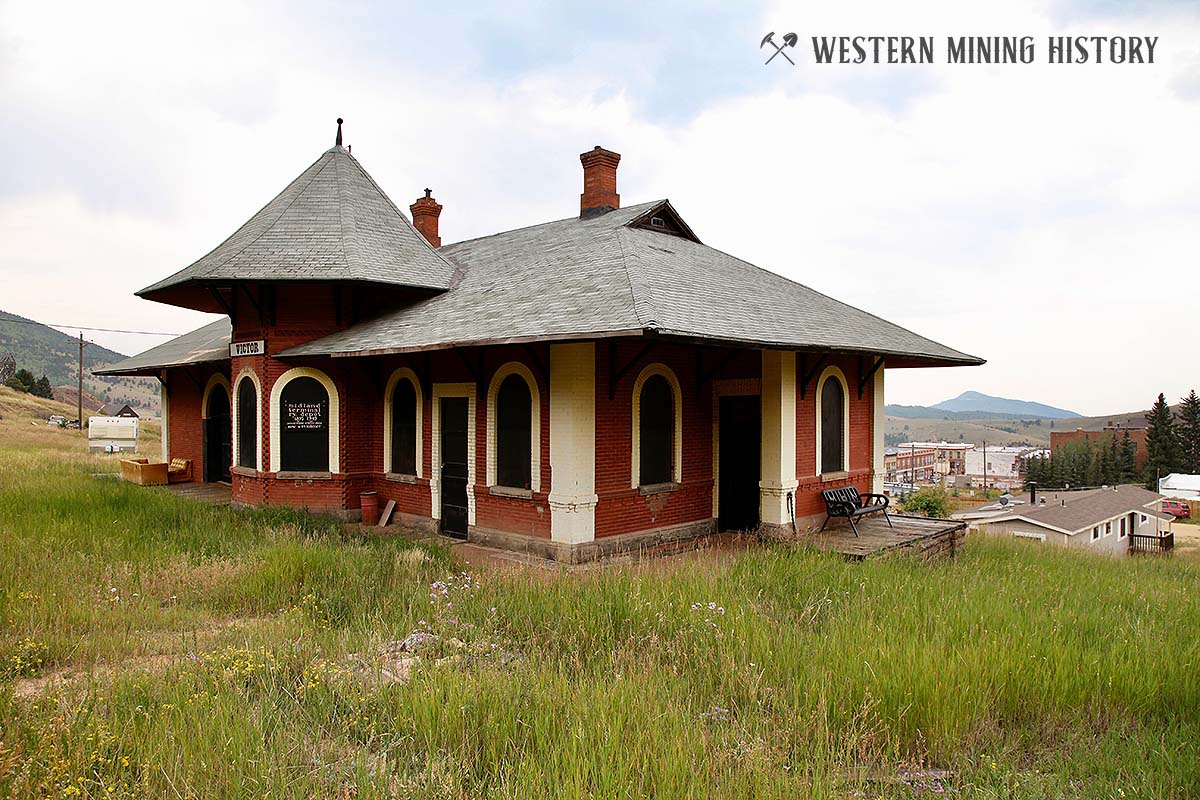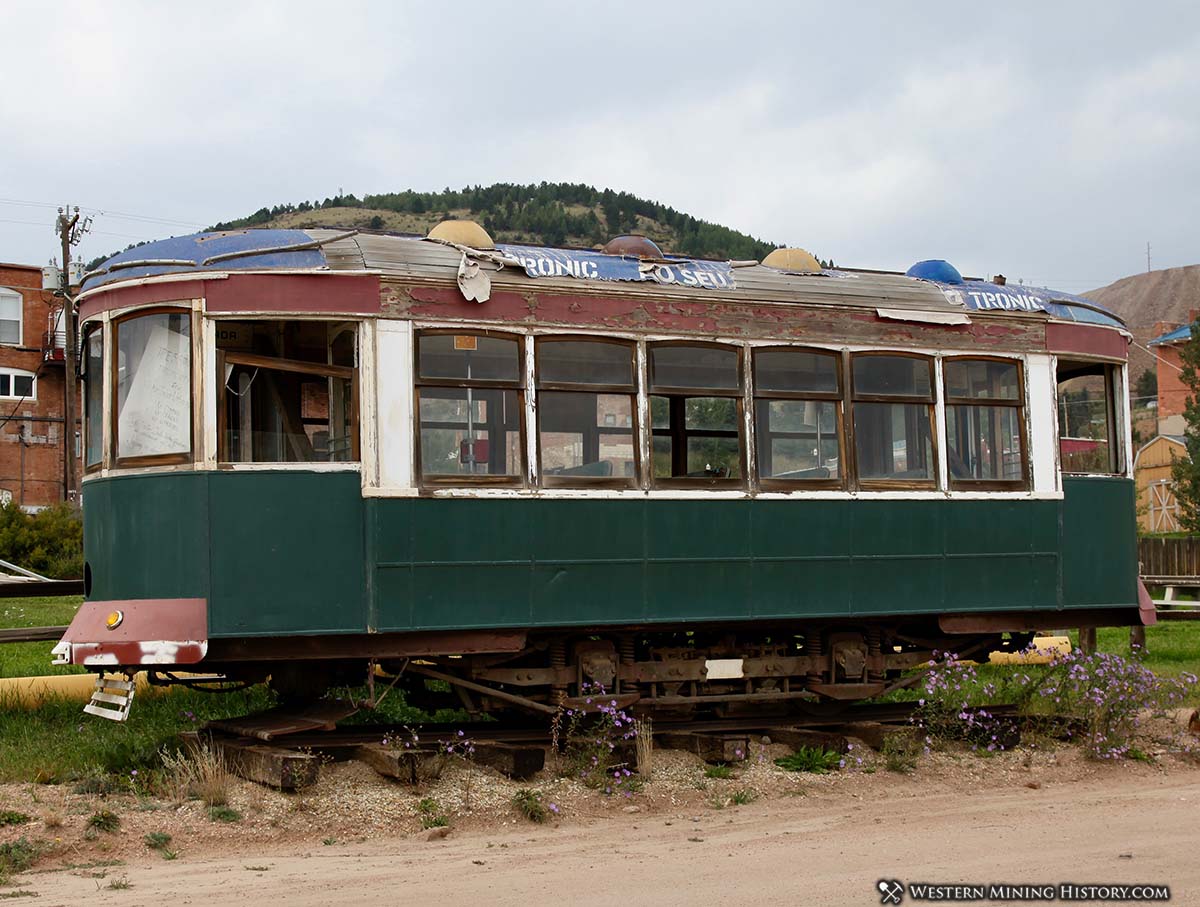Click on an image to get more details or a direct link.
Masons Building - Victor

The Masonic Temple was erected in 1900 as part of Victor's revival after the great fire. The second story clubhouse has been home to the Victor Masons and the Order of the Eastern Star ever since. The building was a popular meeting hall not only for the Masons, but also for the International Order of Odd Fellows, Ladies of the Grand Army of the Republic, Modern Wodmen of America, Junior Order of United American Mechanics, Royal Neighbors, and the Unity Degree of Honor.
In the early 1900's, Summer A Hacley's Furniture Store occupied the first floor of the building where he sold "new and second-hand furniture, house furnishing goods, ranges and stoves of all kinds, tents, wagon covers etc." During World War I, a steam laundry was operated on the first floor of the building by J.J. Jenkins, who was the Grand Dragon of the KKK in Victor. Jenkins sold the laundry to Jack Powers who operated it until World War II.
From a sign at the site
Masons Building - Victor
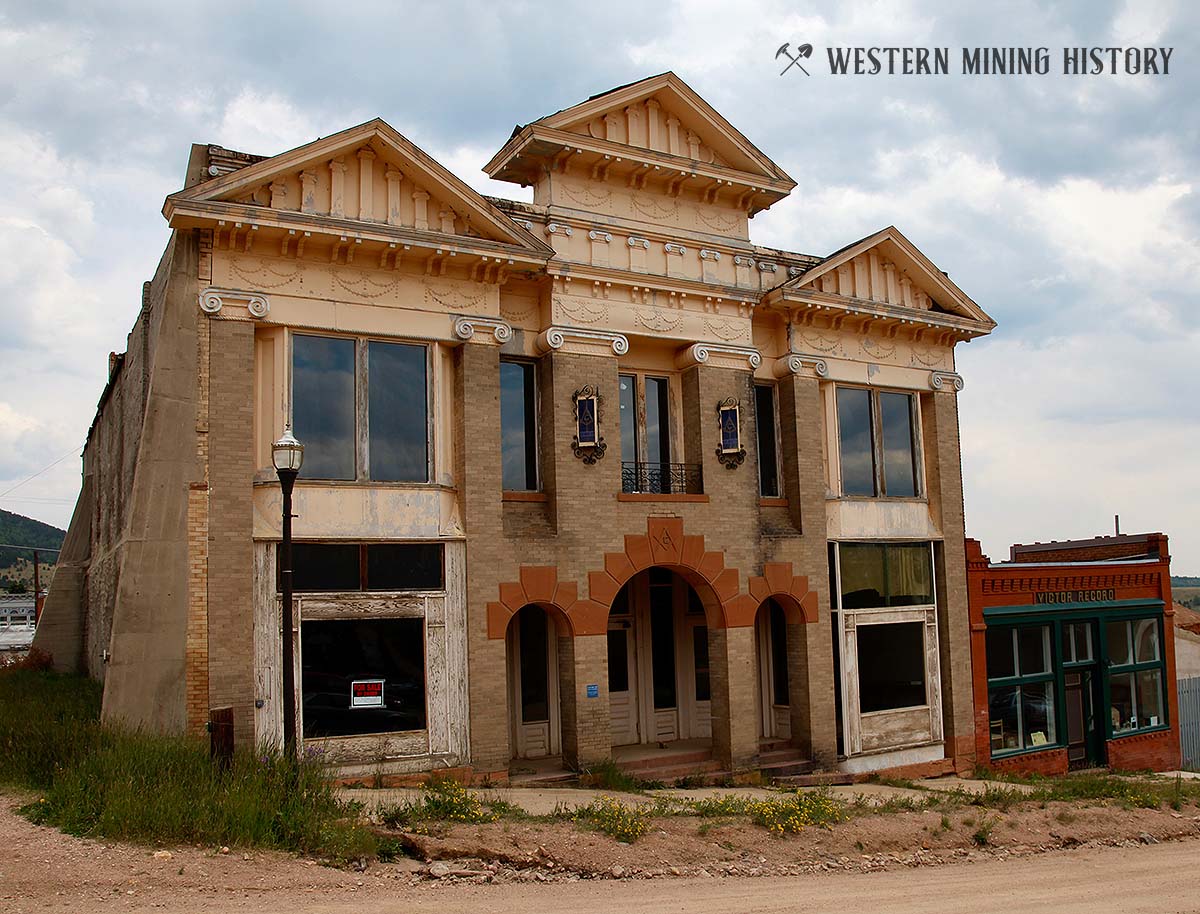
The Masonic Temple was erected in 1900 as part of Victor's revival after the great fire. The second story clubhouse has been home to the Victor Masons and the Order of the Eastern Star ever since. The building was a popular meeting hall not only for the Masons, but also for the International Order of Odd Fellows, Ladies of the Grand Army of the Republic, Modern Wodmen of America, Junior Order of United American Mechanics, Royal Neighbors, and the Unity Degree of Honor.
In the early 1900's, Summer A Hacley's Furniture Store occupied the first floor of the building where he sold "new and second-hand furniture, house furnishing goods, ranges and stoves of all kinds, tents, wagon covers etc." During World War I, a steam laundry was operated on the first floor of the building by J.J. Jenkins, who was the Grand Dragon of the KKK in Victor. Jenkins sold the laundry to Jack Powers who operated it until World War II.
From a sign at the site
Former Gold Coin Club - Victor
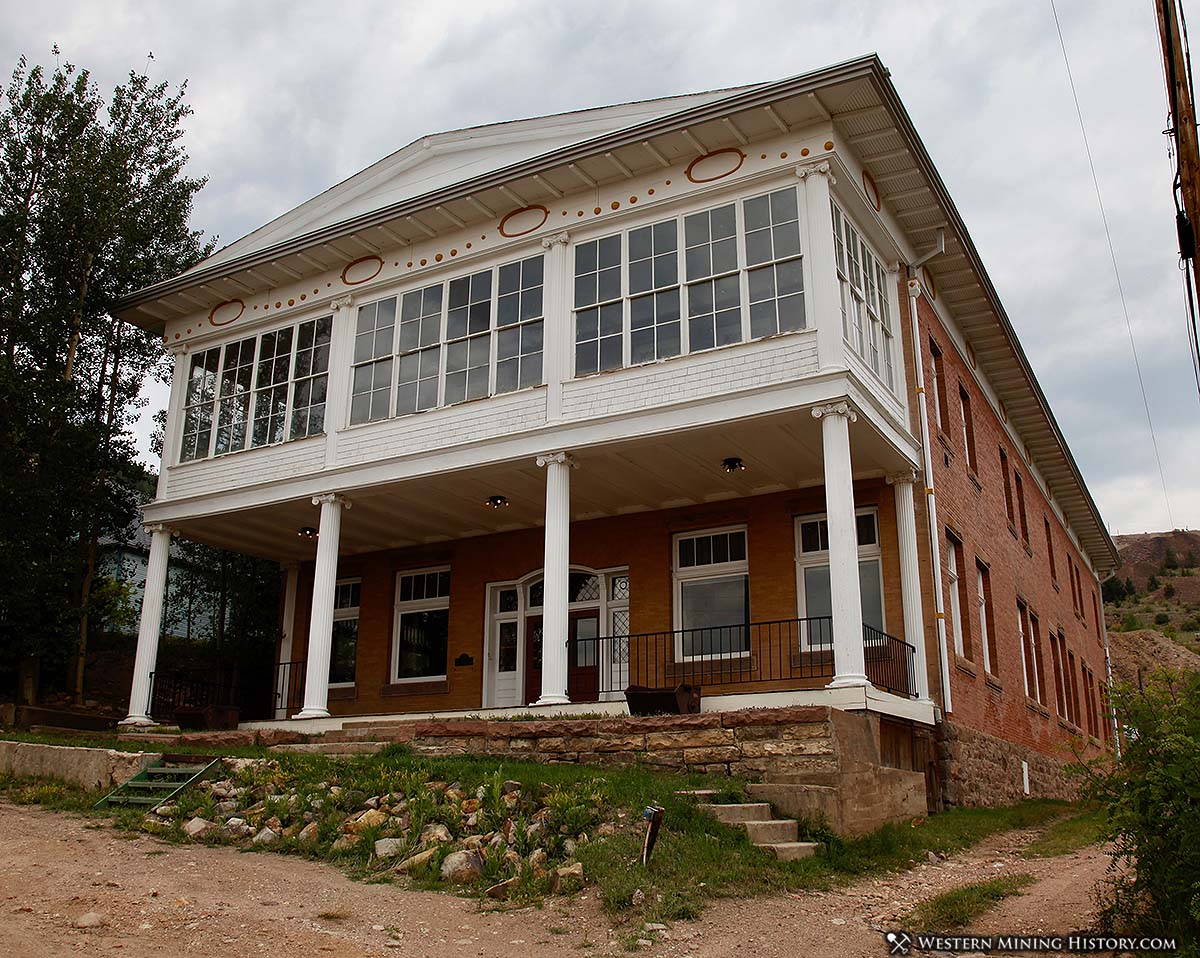
The Gold Coin Club was rebuilt after the great fire of 1899 at a cost of $50,000 by the Woods family, founders of the City of Victor and developers of the Gold Coin Mine (located across the street). It is a rare example of a social club built exclusively for the miners by the mine owners. Patterned after the New York Athletic Club, the Gold Coin Club contained a ballroom, gymnasium, bowling alleys, pool and game room, a 700-volume library, dining rooms and space for a 25-piece band which played at most Victor community events. The second tier of the porch was originally open and reportedly once served as a balcony from which President Theodore Roosevelt spoke to a crowd.
The glory years lasted only briefly. Labor strikes in 1903-1904 devastated the financial empire of the Woods family and forced closure of the Gold Coin Club. In 1904 the building was sold to Dr, C.E. Eliot who operated it as the Red Cross Hospital for a decade. In the mid-1900's Dr. A.C. Denman used the building as a residence and office. Later, this vast structure housed a restaurant and a theater.
Gold Coin Double Reel Hoist

The direct-acting, standard, Corliss, double rell, flat-rope hoist was originally installed here at the Gold Coin Mine for the 1200-foot deep shaft. Around World War I, the hoist was moved to the Portland No. 2 shaft where is subsequently serviced serviced a 3500-ft. deep shaft. The hoist was electrified for this deeper work by the Portland Gold Mining Company.
in 1988, during a severe wind storm, the Portland II Headframe fell over due to the rotting timber legs at ground level. The hoist was then moved back to the Gold Coin Shaft where it has been restored.
St. Victor's Catholic Church

When Father Edward Downey was appointed the first priest for Victor in 1894, only 25 families claimed a Catholic religious affiliation. The first Mass was celebrated in the Baptist Church in June of that year. For several months, Mass was offered in Mr. DeBoice's lumber office in Victor, and in a private house in Lawrence (south of Victor). The first Catholic Church was a small frame structure built on two lots on South Second Street donated by the Woods Investment Company.
By 1901 the need arose for a larger church and ground was broken at Second Street and Portland Avenue. The corner store for St. Victor's Catholic Church was laid in 1902, and the church was completed in September of 1903. By that time the Catholic population had increased to 350 families.
A bell tower was not included in the design because Father Downey maintained that "in a mining camp where men work three shifts, our miners are entitled to all the sleep they can get undisturbed by the ringing of church bells".
The central front wood paneled door is flanked to the side and above by stained-glass Gothic windows. A stone cross in relief between the two flat pilasters surmounts the central door and window. Note the small rose window in the peak of the gable end.
Hoist at Cresson Headframe

The steel headframe was disassembled from the site of the Cresson Mine, now the Cresson Surface Mine, between Victor and Cripple Creek. It was refurbished, reassembled and erected in 1995 as a donation to the City of Victor and to District miners - past, present, and Future.
The Cresson headframe stood over the Cresson Mine shaft for over 73 years prior to its move to this location. The headframe had been moved once before, in 1923, from the Golden Cycle Mine located just west of Goldfield, to the Cresson Mine, replacing a wooden headframe.
The steel headframe allowed the Cresson Mine owners to sink a shaft ultimately to the depth of about 2800 feet below the surface. The capacity of the headframe became important as the additional hoisting cable increased the weight to be hoisted and faster rates of hoisting were desired. The headframe had two sheave wheels at the top. Over these ran the hoist cables, one to the ore hoisting skip and the other to a counterweight. The cage was used to hoist miners and supplies into the mine and gold ore out of the mine. This headframe stands about 100 feet high and weighs about 35 tons.
The Cresson underground mine produced $51,000,000 worth of gold at a time when gold was fixed at $20.67 to $35 per troy ounce. The Cresson Mine was the site of the 1914 discovery of a room-sized "vug" - something akin to a very large geode. At 1,200 feet below the surface this vug produced 60,000 ounces of gold. The mine was idle since 1960 except for a small operation in the early 1980's.
In 1994 surface mining was initiated in low-grade ore deposits to once again produce gold, this time at a scale that set records for Colorado. You can learn more about mining at the Victor Lowell Thomas Museum and see the overview of the Cresson Surface Mine at the American Eagles Scenic Overlook.
From a sign at the site
